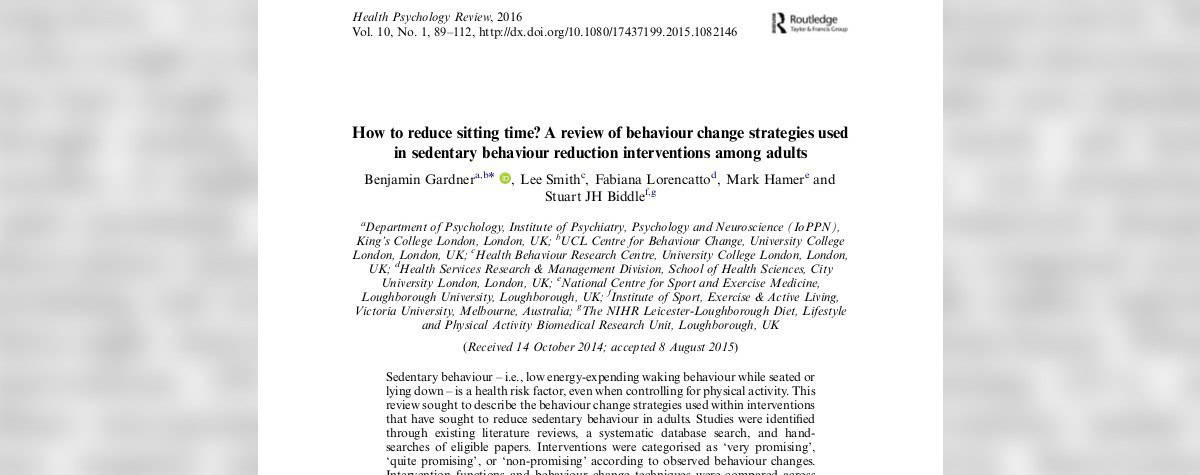
Everything Science Knows Right Now About Standing Desks
September 16, 2015
Targeting Physical Activity Doesn’t Reduce Sedentary Time
October 2, 2015A new paper in IJBNPA examines the prospective associations between physical activity, sedentary behaviour, and academic achievement in British teens:
Background
We investigated prospective associations between physical activity/sedentary behaviour (PA/SED) and General Certificate of Secondary Education (GCSE) results in British adolescents.
Methods
Exposures were objective PA/SED and self-reported sedentary behaviours (screen (TV, Internet, Computer Games)/non-screen (homework, reading)) measured in 845 adolescents (14·5y ± 0·5y; 43·6 % male). GCSE results at 16y were obtained from national records. Associations between exposures and academic performance (total exam points) were assessed using multilevel mixed-effects linear regression adjusted for mood, BMI z-score, deprivation, sex, season and school; potential interactions were investigated.
Results
PA was not associated with academic performance. One-hour more accelerometer-assessed SED was associated with (β(95 % CI)) 6·9(1·5,12·4) more GCSE points. An extra hour of screen time was associated with 9.3(−14·3,-4·3) fewer points whereas an extra hour of non-screen time (reading/homework) was associated with 23·1(14·6,31·6) more points. Screen time was still associated with poorer scores after adjusting for objective PA/SED and reading/homework.
Conclusions
An extra hour/day of screen time at 14·5y is approximately equivalent to two fewer GCSE grades (e.g., from B to D) at 16y. Strategies to achieve the right balance between screen and non-screen time may be important for improving academic performance. Concerns that encouraging more physical activity may result in decreased academic performance seem unfounded.
The full text can be access for free via the IJBNPA website.



